Ego, Ideology, and the Battle for the Soul of the Profession

From the outside, psychotherapy often appears to be a staid and sober enterprise – a science of the mind dedicated to the rational amelioration of human suffering. But a closer examination of the field’s history reveals a far more tumultuous and fractious reality. Beneath the calm veneer of clinical respectability lies a roiling cauldron of clashing personalities, competing paradigms, and bitter doctrinal disputes. Far from a detached, objective science, psychotherapy has always been an ideological battleground on which the great questions of human nature and the good life have been fought out by charismatic theorists and true believers.
Freud, Jung, Adler
This contentious dynamic was there from the start, in the uneasy alliance between Freud, Jung, and Adler that gave birth to the psychoanalytic movement. What began as a collaboration of visionary explorers of the psyche ended in acrimony and schism, as personal ambition and philosophical differences tore the trio apart. At the heart of their split lay a fundamental disagreement about the nature of the unconscious and its role in shaping human experience.
For Freud, the unconscious was a seething cauldron of repressed instinctual drives – a place of unconstrained irrationality and sexual-aggressive urges that had to be tamed and sublimated for civilization to function. Jung, by contrast, saw the unconscious as a deep well of universal archetypes and collective wisdom – a transpersonal dimension of the psyche connecting each individual to the perennial symbols and myths of humanity. And Adler viewed the unconscious through the lens of his “individual psychology,” as a repository of compensatory fictions designed to cope with feelings of inferiority and helplessness in the face of life’s challenges.
These divergent visions implied radically different conceptions of the self, of psychopathology, and of the therapeutic process. Whereas Freud’s psychology was a tragic one, emphasizing the conflict between instinctual gratification and the demands of society, Jung’s was ultimately a religious one, seeing the goal of individuation as the integration of the personal and collective unconscious in the service of a higher spiritual wholeness. Adler’s, meanwhile, was a kind of proto-existentialist psychology, stressing the creative power of the individual to construct a meaningful life in the face of inevitable limitations and insecurities.
As the psychoanalytic diaspora spread and diversified in the early-to-mid 20th century, these fissures only deepened. The neo-Freudians like Horney, Fromm and Sullivan sought to temper Freud’s instinctual determinism with an emphasis on the shaping role of culture and interpersonal relationships. The ego psychologists like Hartmann and Erikson aimed to bolster the synthetic and executive functions of the ego in mediating between instinctual drives and external reality. And the object relations theorists like Klein, Winnicott and Fairbairn shifted the focus from instinctual drives to the internalized representations of early caregivers in structuring psychic life.
Each of these revisions implied a different vision of psychological health and healing. For the culturalists, therapy was a kind of benevolent re-parenting in which the internalization of a “good object” could undo the damage of early misattunement. For the ego psychologists, it was a process of strengthening the ego’s capacity for mastery, agency and executive control. And for the object relations school, it was a matter of working through and integrating split-off self-and-object representations to achieve a more whole and cohesive sense of self.
By the 1960s and 70s, these intra-psychoanalytic debates had been joined by challenges from outside the Freudian fold. The humanistic-existential therapies of Rogers, Maslow, Perls and others rejected the deterministic and pathologizing thrust of classical analysis in favor of a more optimistic view of human potential grounded in phenomenology and existential philosophy. They saw therapy not as a correction of neurotic conflict but as a nurturing of the client’s innate drive towards self-actualization – a facilitation of the organismic valuing process and the achievement of authenticity.The rise of behaviorism and cognitive therapy posed an even more radical challenge to the psychoanalytic worldview. Skinner, Wolpe, Beck and others argued that subjective experience was irrelevant to the scientific study of behavior, and that psychological distress was the product of maladaptive learning and irrational cognitions rather than unconscious conflicts or relational deficits. They re-conceived therapy as a kind of emotional re-education aimed at extinguishing dysfunctional behaviors and beliefs through counter-conditioning, exposure, and rational disputation.
The rise of behaviorism and cognitive therapy posed an even more radical challenge to the psychoanalytic worldview. Skinner, Wolpe, Beck and others argued that subjective experience was irrelevant to the scientific study of behavior, and that psychological distress was the product of maladaptive learning and irrational cognitions rather than unconscious conflicts or relational deficits. They re-conceived therapy as a kind of emotional re-education aimed at extinguishing dysfunctional behaviors and beliefs through counter-conditioning, exposure, and rational disputation.
But even as these new paradigms were reshaping the landscape of individual therapy, a parallel revolution was underway in the realm of family therapy. Building on the pioneering work of Bateson, Jackson, and Haley at the Mental Research Institute in Palo Alto, a new generation of clinicians began to conceptualize psychological problems not as the product of individual pathology, but as the expression of dysfunctional family systems and communication patterns. At the forefront of this movement were Salvador Minuchin, the architect of structural family therapy, and Virginia Satir, the mother of experiential family therapy.
Emotional vs Structural Family Therapy
While sharing a commitment to the systemic understanding of human problems, Minuchin and Satir embodied starkly different visions of the family therapy process. For Minuchin, the goal of therapy was to restructure the family system by clarifying boundaries, realigning subsystems, and disrupting dysfunctional transactional patterns. The therapist was an active, directive presence who challenged the family’s status quo and nudged them towards more adaptive ways of organizing their relationships. Emotions were seen as largely irrelevant to this process – indeed, focusing on feelings was viewed as a potential distraction from the essential work of structural change.
Satir, by contrast, saw the therapist’s role as that of a facilitator who helped family members get in touch with their authentic feelings and communicate them openly and directly. Therapy was less about rearranging the external structure of the family than about fostering a new level of emotional authenticity and congruence in family relationships. Techniques like family sculpting, parts parties, and the communication stances were used to surface and transform the hidden feelings and beliefs that constrained family members’ ability to connect with themselves and each other.
This philosophical clash came to a head in the 1970s and 80s, as Minuchin and his protégé, Jay Haley, engaged in a series of public debates with proponents of experiential approaches like Satir and Carl Whitaker. These debates often took on a personal edge, with Minuchin deriding the experientialists as “touchy-feely” and “New Age,” and Satir and Whitaker accusing the structuralists of emotional coldness and authoritarianism. At one memorable conference in the early 1980s, Minuchin and Whitaker took to the stage to demonstrate their contrasting methods with a live family – a spectacle that one observer likened to “a boxing match between a technician and a mystic.”
But perhaps the most consequential of these clashes was the one between Minuchin and Sue Johnson, the creator of Emotionally Focused Therapy (EFT). Johnson, who began her career as a structural family therapist, had grown increasingly dissatisfied with what she saw as the limitations of the structural model. Drawing on attachment theory and humanistic psychology, she developed a new approach that placed emotion at the center of the change process. For Johnson, it was only by accessing and reprocessing the deep-seated fears and longings underlying a couple’s negative interactional cycle that lasting change could occur.
Minuchin, for his part, was skeptical of this emphasis on emotion, which he saw as a regressive turn away from the hard-won insights of systems theory. In a series of pointed exchanges with Johnson at professional conferences and in the pages of academic journals, he argued that her model risked losing sight of the essential contextual factors that shape family life, and that an over-focus on individual feelings could actually reinforce the very patterns of blame and dysfunction that family therapy was meant to challenge.
These debates reflected a deeper tension within the field between the “first-order” cybernetic view of families as self-regulating systems and the “second-order” constructivist view that emphasized the role of meaning and perception in shaping family realities. They also highlighted the enduring question of how to balance the competing imperatives of structure and process, behavioral change and emotional understanding, in the practice of family therapy.
In many ways, these debates mirrored the broader philosophical tensions and historical-cultural forces that have shaped the field of psychotherapy as a whole. They reflected the struggle to find a middle ground between the objectivism of the biomedical model and the subjectivism of the hermeneutic tradition, between the decontextualized individualism of American culture and the relational holism of systems thinking. And they underscored the ongoing challenge of integrating insights from multiple theoretical perspectives and levels of analysis into a truly biopsychosocial understanding of human functioning.
Ultimately, the Minuchin-Johnson debate, like so many of the feuds and schisms that have marked the history of psychotherapy, was not so much resolved as transcended. As the field has matured, there has been a growing recognition of the need for a more integrative and pluralistic approach that honors the contributions of multiple theoretical traditions while remaining grounded in the pragmatic realities of clinical practice. This has been reflected in the rise of trans-theoretical models like the common factors approach, integrative problem-centered therapies, and multi-systemic interventions that draw on a wide range of conceptual and technical resources to meet the unique needs of each client system.
At the same time, there has been a renewed appreciation for the value of clinical artistry and the role of the therapist’s own subjectivity and relational presence in the change process. Rather than striving for a kind of technical neutrality or theoretical purity, many contemporary therapists see their work as a form of co-creative meaning-making in which their own personal and professional identities are deeply implicated. This has led to a greater emphasis on therapist self-awareness, cultural competence, and the cultivation of a “therapeutic self” that can serve as an instrument of healing and transformation.
These new paradigms set the stage for the ideological showdowns of the late 20th century. As psychotherapy became an increasingly professionalized and regulated enterprise, questions of empirical validation, technical standardization and treatment specificity came to the fore. Clinicians, researchers and policymakers debated whether psychotherapy should model itself after evidence-based medicine, with manualized treatments targeted to specific DSM diagnoses, or whether the “common factors” of empathy, alliance and expectancy were the real engines of change across theoretical orientations.
Cognitive Objectivity vs Subjective Wisdom
This tension came to a head in the development of the DSM-5, psychiatry’s diagnostic “bible.” Where previous editions had relied heavily on clinical consensus, the DSM-5 sought to define mental disorders in strictly empirical terms, using observable symptoms rather than inferred causes. This reflected the growing hegemony of a biomedical model that saw psychological distress as a product of discrete brain diseases to be treated with targeted pharmacological and behavioral interventions.
But it also highlighted a parting of ways between American-style “evidence-based practice” and the more clinically-grounded approach embodied in the ICD, the diagnostic framework used in much of the rest of the world. Where the DSM-5 sought to standardize diagnosis using checklists of empirically-validated criteria, the ICD remained more deferential to clinical judgment and phenomenological description. It was, in a sense, a clash between two visions of psychological science – one stressing quantification, standardization and research-driven practice, the other emphasizing idiographic understanding, flexibility and clinical artistry.
Critics charged that the DSM’s hyper-empiricist approach reflected an epistemic bias rooted in American culture – a bias towards reductionism, individualism and the medicalization of normal human suffering. By defining mental disorders solely in terms of observable symptoms, they argued, the DSM was engaging in a kind of neo-Kraepelinian biologism that ignored the personal meanings and social contexts that confer a sense of reality on psychological distress. It was a view that equated superficial similarities in presentation with a deeper equivalence in cause and cure – a view more attuned to the needs of insurance companies and pharmaceutical marketers than to the lived experience of patients.
Subsequent research has lent credence to some of these critiques. Neuroimaging studies using techniques like qEEG have revealed that many DSM diagnoses actually encompass multiple distinct neurophysiological subtypes, each involving different patterns of brain activation and requiring different treatment approaches. The finding that a behavioral syndrome like ADHD can arise from a variety of underlying neural mechanisms – some involving prefrontal underactivation, others striatal hypersensitivity, still others cerebellar dysregulation – underscores the limitations of a one-size-fits-all diagnostic system. It suggests that the phenotypic similarities in symptomatology may mask crucial differences in etiology and pathogenesis.
At the same time, a growing body of evidence has highlighted the central role of social and cultural factors in shaping the expression and prevalence of mental disorders. Cross-cultural studies have documented wide variations in the manifestation of psychological distress across time and place, challenging the notion of culture-free, context-independent diagnostic categories. Historical and sociological analyses have traced the rise of particular diagnoses – from hysteria and neurasthenia to PTSD and social anxiety disorder – to changes in the social, economic and political landscape, suggesting that our very conceptions of mental illness are inextricably bound up with the values and power dynamics of the societies that produce them.
Together, these developments point towards a more nuanced, multi-layered understanding of psychological disorder and its treatment. They suggest that the future of psychotherapy may lie in a kind of biopsychosocial eclecticism that integrates neuroscience, phenomenology, and cultural analysis – an approach that weds the rigor of empirical research with the subtlety of clinical perception and the critical acumen of the social sciences and humanities. Such an approach would move beyond the reductionism of the biomedical model without lapsing into the subjectivism of the hermeneutic tradition. It would strive to ground the understanding and treatment of psychological distress in a deeply contextualized, person-centered framework attentive to the complex interplay of biological, psychological, and social factors in shaping human experience.
But realizing this vision will require more than just a change in scientific paradigms or research methodologies. It will require a fundamental re-thinking of the institutional structures, economic incentives, and professional cultures that shape the practice of psychotherapy in the 21st century. It will require a move beyond the narrow confines of guild interests and theoretical orthodoxies towards a more open-ended, collaborative approach to inquiry and training. And it will require a willingness to question the unexamined assumptions and power dynamics that have long structured the relationship between therapists, patients, and society at large.
In the end, the feuds and factions that have roiled the world of psychotherapy from Freud and Jung to the present day are more than just academic turf battles or clashes of outsized personalities. They are the surface manifestations of deeper philosophical tensions and historical-cultural forces that have shaped the field from its inception. Each theoretical schism and internecine conflict has been, in its own way, a battle for the soul of the profession – a struggle to define the nature of the self, the sources of suffering, and the proper aims and methods of treatment. And each has been shaped by the social, economic and political contexts of its time – from the cultural upheavals of fin-de-siècle Europe to the consumerist ethos and biomedical revolution of contemporary America.
The challenge facing psychotherapy today is to find a way to honor the insights and intentions of its feuding founders while transcending the limitations and biases of their particular historical moment. It is to fashion a conception of theory and practice that is at once scientifically rigorous and humanistically attuned – one that balances the imperatives of empirical validity with the recognition of human complexity and creativity. Above all, it is to re-envision psychotherapy as a collaborative endeavor in the service of human meaning-making and emancipation – a way of working with people to construct more fulfilling and liberating ways of being in the world. Only by rising to this challenge can psychotherapy hope to realize its true potential as a force for individual and collective transformation in an age of unprecedented psychological and social upheaval.
References:
Buirski, P., & Haglund, P. (2009). Making sense together: The intersubjective approach to psychotherapy. Jason Aronson.
Cushman, P. (1995). Constructing the self, constructing America: A cultural history of psychotherapy. Da Capo Press.
Davies, J. (2016). The importance of suffering: The value and meaning of emotional discontent. Routledge.
Duncan, B. L. (2002). The legacy of Saul Rosenzweig: The profundity of the dodo bird. Journal of Psychotherapy Integration, 12(1), 32–57.
Elkins, D. N. (2007). Empirically supported treatments: The deconstruction of a myth. Journal of Humanistic Psychology, 47(4), 474-500.
Engel, G. L. (1977). The need for a new medical model: A challenge for biomedicine. Science, 196(4286), 129-136.
Frances, A. (2013). Saving normal: An insider’s revolt against out-of-control psychiatric diagnosis, DSM-5, big pharma, and the medicalization of ordinary life. William Morrow.
Greenberg, L. S. (2017). Emotion-focused therapy of depression. American Psychological Association.
Harrington, A. (2019). Mind fixers: Psychiatry’s troubled search for the biology of mental illness. W.W. Norton & Company.
Insel, T. R. (2014). The NIMH research domain criteria (RDoC) project: Precision medicine for psychiatry. American Journal of Psychiatry, 171(4), 395-397.
Johnson, S. M. (2019). Attachment theory in practice: Emotionally focused therapy (EFT) with individuals, couples, and families. Guilford Publications.
Kirmayer, L. J. (2007). Psychotherapy and the cultural concept of the person. Transcultural Psychiatry, 44(2), 232-257.
Kleinman, A. (1988). Rethinking psychiatry: From cultural category to personal experience. Free Press.
Lane, C. (2007). Shyness: How normal behavior became a sickness. Yale University Press.
Minuchin, S. (2018). Families and family therapy. Routledge.
Norcross, J. C., & Wampold, B. E. (2011). Evidence-based therapy relationships: Research conclusions and clinical practices. Psychotherapy, 48(1), 98.
Shedler, J. (2018). Where is the evidence for “evidence-based” therapy?. Psychiatric Clinics, 41(2), 319-329.
Shedler, J. (2010). The efficacy of psychodynamic psychotherapy. American Psychologist, 65(2), 98–109.
Stolorow, R. D. (2011). World, affectivity, trauma: Heidegger and post-Cartesian psychoanalysis. Routledge.
Wampold, B. E. (2015). How important are the common factors in psychotherapy? An update. World Psychiatry, 14(3), 270-277.
Wampold, B. E., & Imel, Z. E. (2015). The great psychotherapy debate: The evidence for what makes psychotherapy work. Routledge.
Watters, E. (2010). Crazy like us: The globalization of the American psyche. Simon and Schuster.
Whitaker, R. (2010). Anatomy of an epidemic: Magic bullets, psychiatric drugs, and the astonishing rise of mental illness in America. Crown.




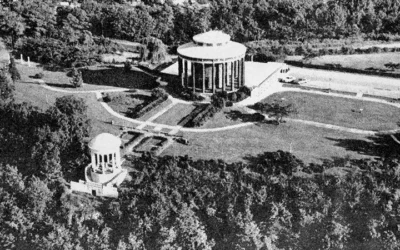


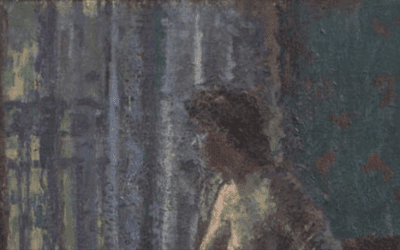


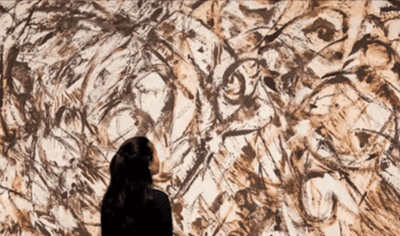




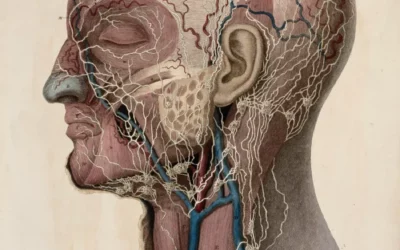

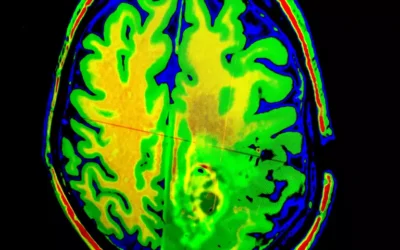


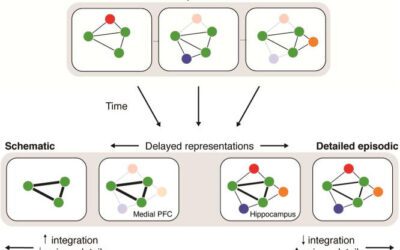
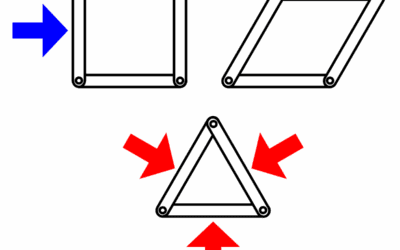




0 Comments